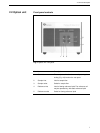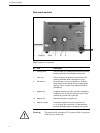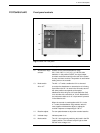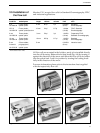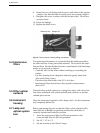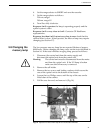
4. Operation
4.1 Choice of
wavelength
4. Operation
The UV-1 can be operated at either 254 nm, 280 nm or 405 nm.
The choice of wavelength will depend on the spectral properties of
both the eluent and the substances to be detected. Proteins and poly-
pep-tides containing aromatic amino acids are usually best detected at
280 and 254 nm. Nucleic acids and poly-nucleotides are usually best
detected at 254 nm and ferroproteins i.e. hemoglobins, cytochrome
and porphyrin derivatives at 405 nm.
4.2 Choice of AU or
The UV-1 may be set to monitor either the absorbance or %
transmission
transmittance of a flowing liquid. Absorbance measurements give
(%T)
recorder responses which are proportional to the solute concentration
when Lambert Beers Law is obeyed. The AU setting is thus most
appropriate for general use, particularly when quantitative results are
required. However, even with the 3 mm path length cell, there is
always a slight risk that the peak will go off scale. Under these
conditions, peak maxima can still be located by monitoring
transmission.
The relationship between AU and Optical density (OD) is
AU = L x OD
where L is the optical path length in cm.
The relationship between OD and transmission expressed as %T is
T%=
100
anti log
10
(L
.
OD)
where L is the optical path length in cm.
15



